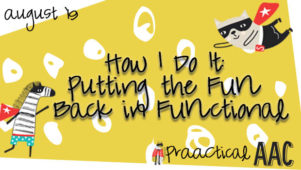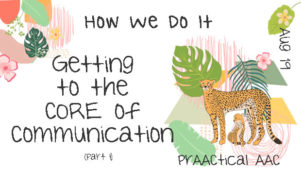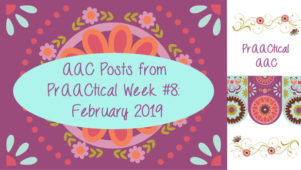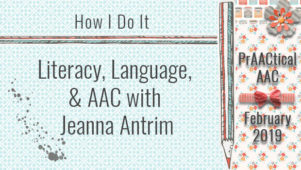How I Do It: 5 Ways to Tell If Your Students are Becoming Competent Communicators with Marlene Cummings
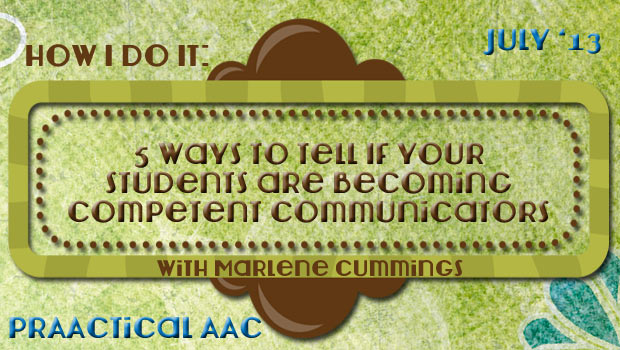
It’s always a good day when we get to share the thoughts of veteran AAC SLP, Marlene Cummings. In this post, Marlene talks about the signs to look for as clients gain skills with AAC and wraps up her series of posts on her yearlong experience in providing embedded professional learning experiences in Oakland Schools. You can see her earlier posts on cultivating the right mindset, their framework for AAC success, her AAC implementation toolbox, and the communication environment.
5 things in our “Destination Toolbox”
“Are we there yet?” or “Five Ways to Tell That Your Students are Becoming Competent Communicators”
Students are:
- Participating in the purposes of communication by novelly generating multiple word phrases demonstrating a variety of communicative functions
- Taking multiple communicative turns with multiple partners in multiple environments
- Using words from many different word classes
- Using words to talk about words
- Using language to communicate and communicating to learn
Throughout the implementation of our “framework for success” we have attempted to periodically take “snapshots” of how our teams are doing and if we are moving closer to our target goal.
Target Goal: To provide an implementation framework for research-based, field-tested, user-friendly strategies and tools to the local district teams who support students with complex communication needs, allowing those students the instruction, opportunities, and assistive technology, to become “competent communicators.”
|
AAC Work Embedded Professional Learning Opportunity Feedback |
||||
| What parts of the WEPL made it worth your time? | What would you like improved (in a positive way please share what exactly would have made it better) | How did this WEPL impact your skill set and your practice? | What’s next? What are the next steps you would like to address in this work? | Please share any other thoughts or perceptions. |
| Through-out year-time to process and practice…not overwhelmingEfficient-use of core 32Individualize…knowledge to specific roles; Social Worker, Para Pro, School PsychologistWorking with full team-same info/ same time
|
A method/plan to bring new staff into learningPotential for smaller groups-targeted assistance based on where they are in personal learningModeling-use of videos-more of them | It gave us the understanding that our students have much more language in them wanting to be expressed than we ever anticipated.When and with who I use AACAAC is not just using a device!(Smiley face)I need that reminderAs an SLP, it gave me a whole new skill set to help me meet the needs of my students and their families
|
When we looked back to our first few meetings, we felt we were learning a whole new language and were completely unfamiliar with the terminology or the process. Now we would like to become a lab classroom for others to learn from.What happens when work embedded ends | |
IT’S TIME TO CELEBRATE!!
At the completion of our year long work embedded professional learning project we needed to celebrate. So many amazing things had happened. We shared successes, grappled with challenges, and made plans for the next step.
It is important to celebrate our successes. It is also important to remember them. Each team member received a packet of flower seeds with a poem to remind them where we started. They also received a glow in the dark bracelet: Communication Does Make the World Go Round. And of course everyone needs bubbles!!!
In an “AAC world of communication,” a communicator using AAC would be able to participate in the purposes of communication, demonstrate the functions of communication, have access to a set of core words, and use language flexibly and powerfully. They would learn language, use language to learn, and competently communicate who they are and what they know.
Our intent was to provide an initial framework to our teams so they could “Get Started”. We believe we have gotten off the starting line and are picking up speed. It is a glorious time to be serving individuals with complex communication needs.
Let’s Get Started
There is no Better Time Than Now!
Filed under: PrAACtical Thinking
Tagged With: competent communicator, goals, How I Do It, Marlene Cummings
This post was written by Carole Zangari

